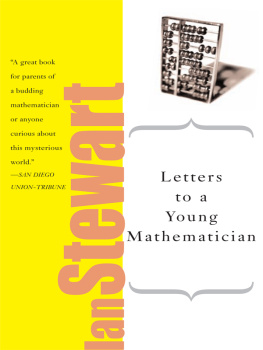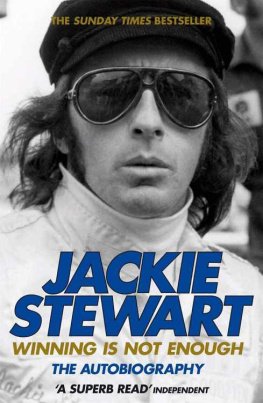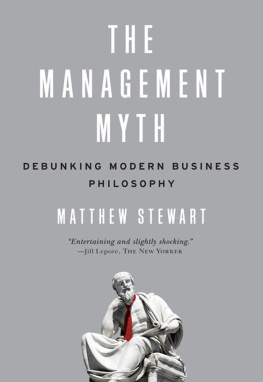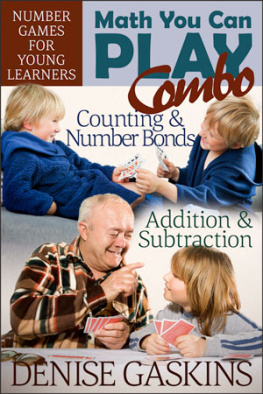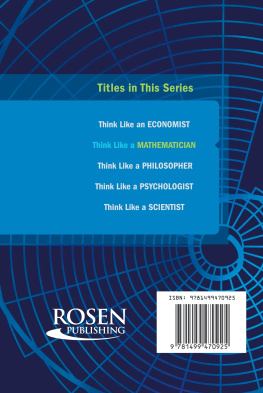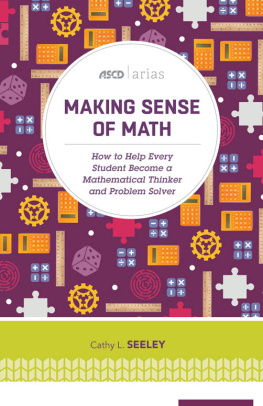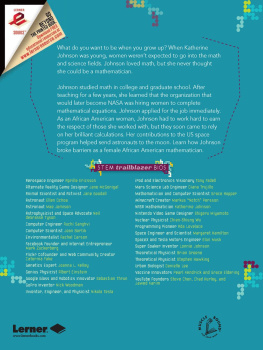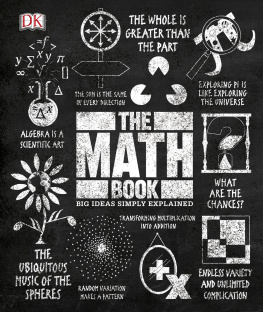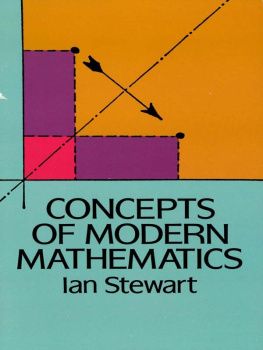Praise for Letters to a Young Mathematician
[D]elightful For non-mathematicians, Letters to a YoungMathematician offers wonderful insight into academics, a reading list in a variety of fields, and a bit of knowledge about Gauss, Fibonacci, Leibniz, Feynman, and Fermat. It also serves as a primer on mathematicians, their culture, their tribal customs, and their community. For mathematicians themselves, Stewart provides first-rate career advice and offers a charming example of how best to talk to the rest of us.
Christian Science Monitor
Ian Stewart, a professor of mathematics at the University of Warwick in England, crafts a series of letters to an imaginary correspondent named Meg, who contemplates a career in math and goes from high school to university, graduate work and finally tenure as a math professor. Los Angeles Times
Offers good advice [Stewarts] description of the community of mathematics is true and appealing. Nature
If you are a parent, friend, or spouse of someone who wants to become a mathematician, or of someone you think should become a mathematician, or even someone who already is a mathematician, you should buy that person a copy of this delightful little book. And if you are curious as to exactly what it is that university mathematicians do, or why, then buy yourself a copy as well.
Keith Devlin, author of The Math Gene
and The Millennium Problems
No one could have written better on what being a mathematician is all about, and on what it takes to become one. A true gem.
Mario Livio, author of The Equation That
Couldnt Be Solved and The Golden Ratio
Ian Stewart
letters to a young
mathematician
A Member of the Perseus Books Group
New York
Joat Enterprises 2006
Hardcover published in 2006 by Basic Books,
A Member of the Perseus Books Group
Paperback published in 2007 by Basic Books
All rights reserved. Printed in the United States of America. No part of this book may be reproduced in any manner whatsoever without written permission except in the case of brief quotations embodied in critical articles and reviews. For information, address Basic Books, 387 Park Avenue South, New York, NY 10016-8810.
Books published by Basic Books are available at special discounts for bulk purchases in the United States by corporations, institutions, and other organizations. For more information, please contact the Special Markets Department at the Perseus Books Group, 11 Cambridge Center, Cambridge MA 02142, or call (617) 252-5298 or (800) 255-1514, or e-mail special.markets@perseusbooks.com.
Library of Congress Cataloging-in-Publication Data
Stewart, Ian.
Letters to a young mathematician / Ian Stewart.
p. cm.
Includes bibliographical references.
ISBN-13: 978-0-465-08231-5 (alk. paper)
ISBN-10: 0-465-08231-9 (alk. paper)
eBook ISBN: 9780465008414
1. MathematicsMiscellanea. I. Title.
QA99.S84 2006
510dc22
2005030384
Paperback ISBN-13: 978-0-465-08232-2
Paperback ISBN-10: 0-465-08232-7
10 9 8 7 6 5 4 3 2 1
In memory of
Marjorie Kathleen (Madge) Stewart
4.2.191417.12.2001
and
Arthur Reginald (Nick) Stewart
2.3.191423.8.2004
without whom I would not have been anything,
let alone a mathematician.
Preface
It is a melancholy experience for a professional mathematician to find himself writing about mathematics. So the great English mathematician Godfrey Harold Hardy, of the University of Cambridge, opened his 1940 classic A Mathematicians Apology.
Attitudes change. No longer do mathematicians believe that they owe the world an apology. And many are now convinced that writing about mathematics is at least as valuable as writing mathematics, by which Hardy meant new mathematics, new research, new theorems. In fact, many of us feel that it is pointless for mathematicians to invent new theorems unless the public gets to hear of them. Not the details, of course, but the general nature of the enterprise. In particular, that new mathematics is constantly being created, and what it is used for.
The world has changed, too, since Hardys time. A typical day for Hardy consisted in a maximum of four hours of intensive thought about research problems; the rest of the day was then occupied watching the game of cricket, his great nonmathematical passion, and reading the newspapers. He must have fitted in some time for the occasional research student as well, but he was reticent about personal matters. A typical day for the modern academic is ten or twelve hours long, with teaching commitments, research grants to pursue, research to be carried out, and liberal doses of pointless bureaucracy to get in the way of anything creative.
Hardy was typical of a certain kind of English academic. He set himself high but narrow standards. He valued his chosen field for its own internal elegance and logic, not for its external uses. He was proud that none of his work could have any possible use in warfare, a position with which most of us can sympathize, especially bearing in mind that his book was published in the opening years of World War II.
He would be disappointed in the extreme to be resurrected today and to learn that on the contrary, his beloved theory of numbers plays an essential role in the mathematical theory of cryptography, with evident military uses. The movie Enigma paints a romanticized view of the period when this connection first began to emerge, in the vital wartime work of the code breakers at Bletchley Park. Prominent among them was the tragic figure of Alan Turingpure mathematician, applied mathematician, and pioneering computer scientistwho committed suicide because he was persecuted for being a homosexual, a sexual orientation that was then illegal and considered shameful. Social mores change, too.
Hardys classic little gem sheds a great deal of light on how academic mathematicians viewed themselves and their subject in 1940. It contains important lessons for any would-be young mathematician, but some of these are obscured by the books outdated attitudes, such as its default assumption that mathematics is strictly a male preserve. It is still worth reading, but only if its opinions are seen in their historical context, and it is not assumed that they all remain valid today.
Letters to a Young Mathematician is my attempt to bring some parts of A Mathematicians Apology up to date, namely, those parts that might influence the decisions of a young person contemplating a degree in mathematics and a possible career in the subject. The letters, addressed to Meg, follow her career in roughly chronological order, from high school through to a tenured position in a university. They discuss a variety of topics, ranging from basic career decisions to the working philosophy of professional mathematicians and the nature of their subject. The intention is not merely to offer practical advice, but to give an inside view of the mathematical enterprise, and to explain what it is really like to be a mathematician.

